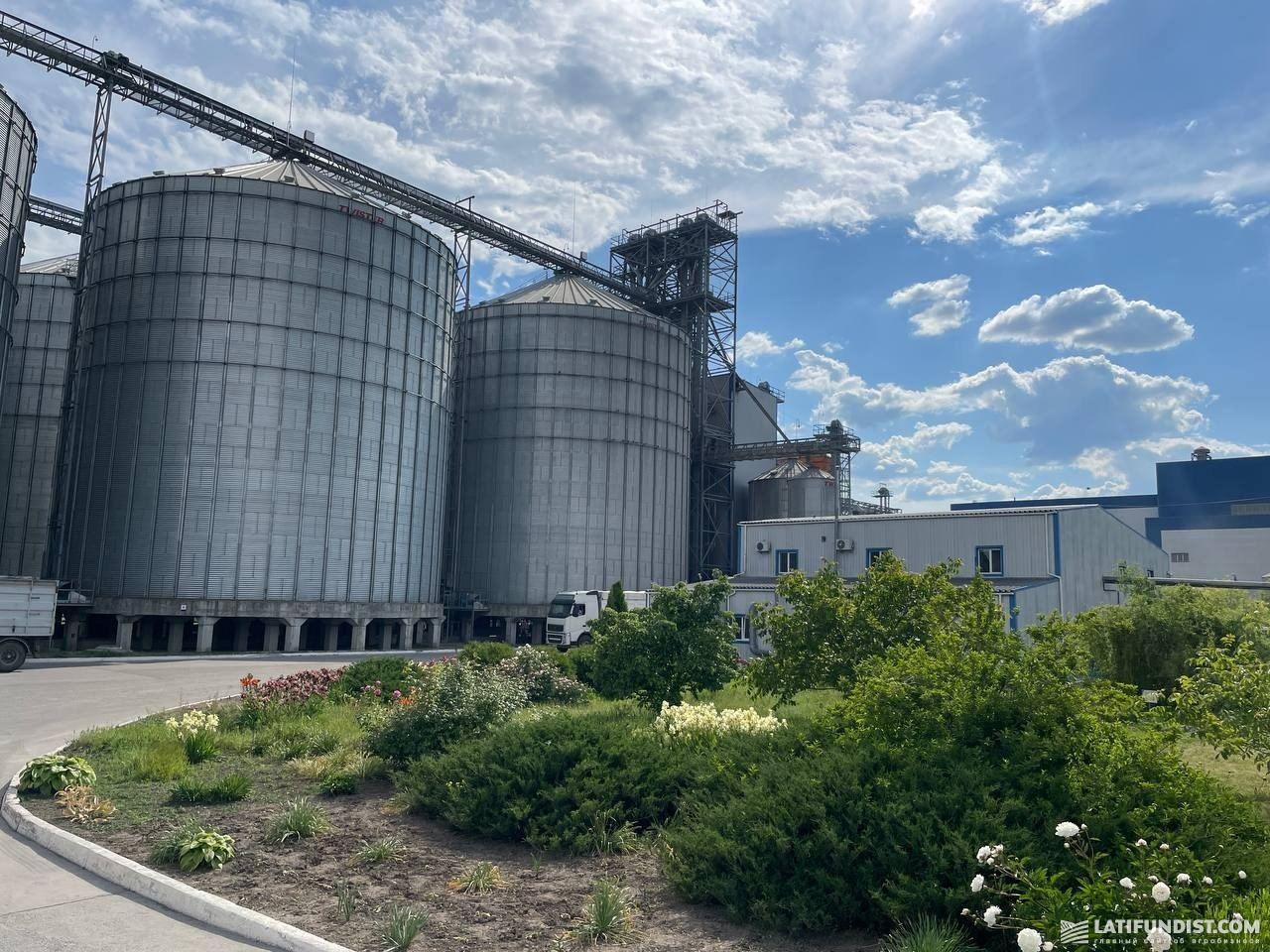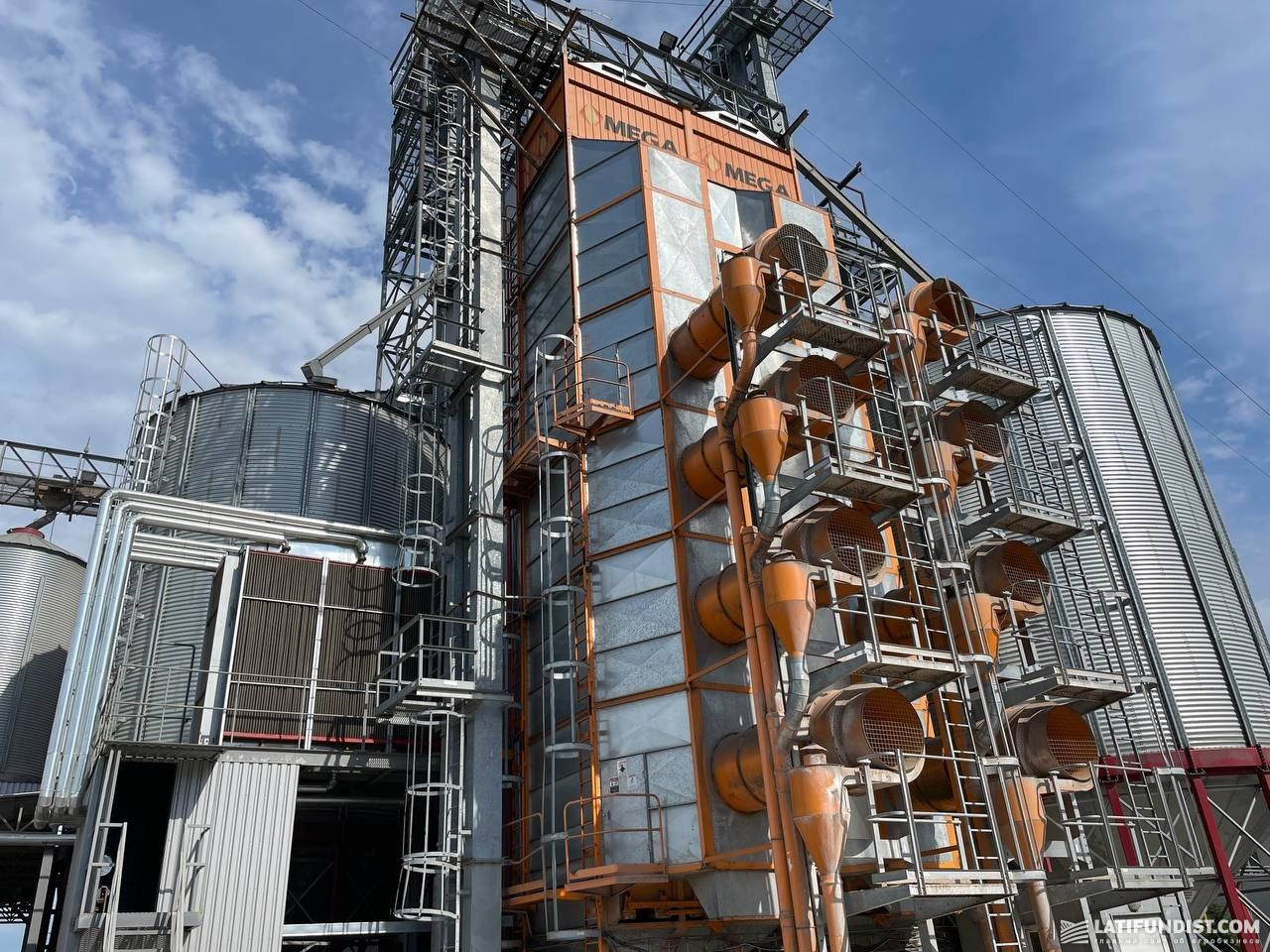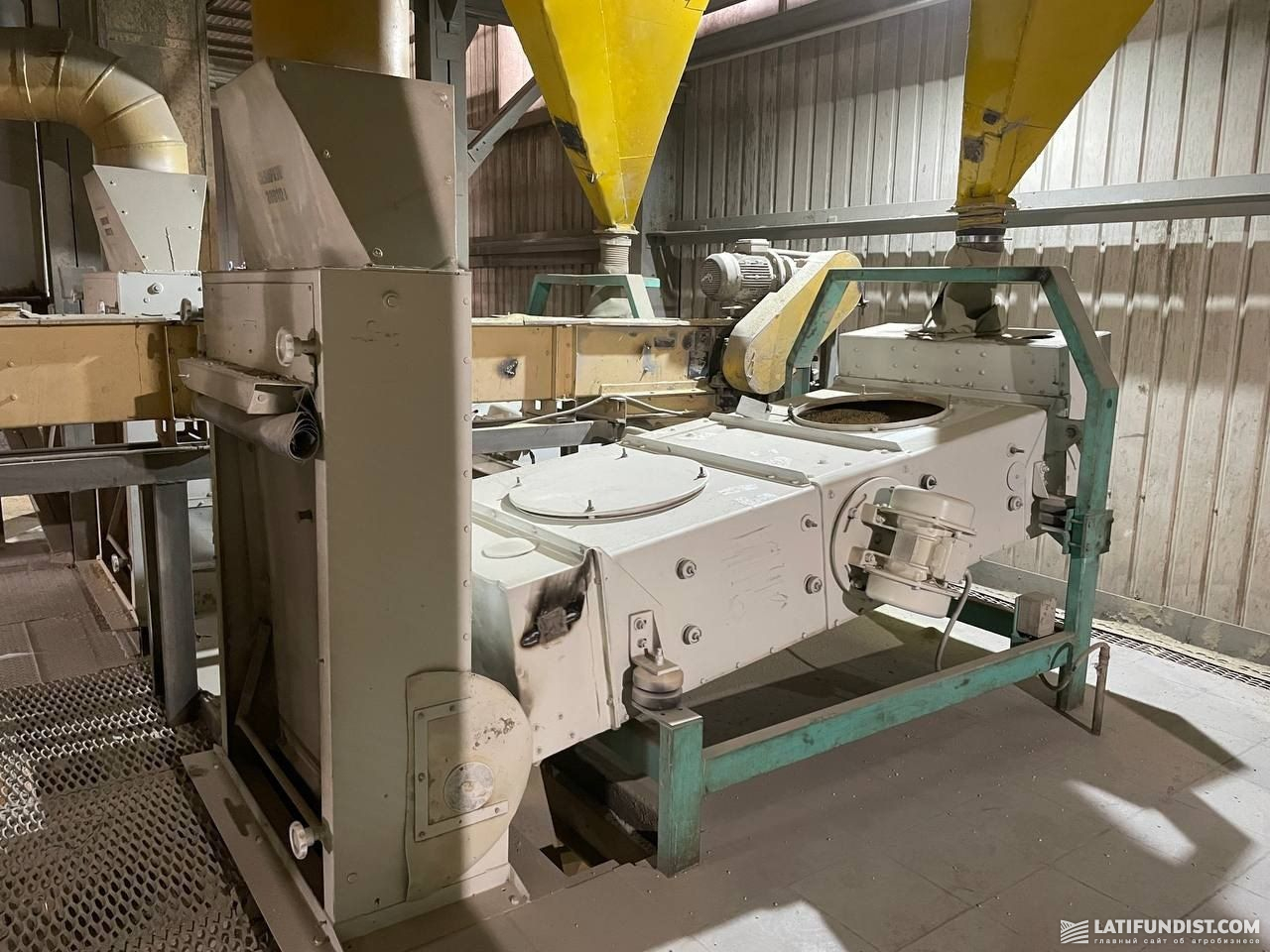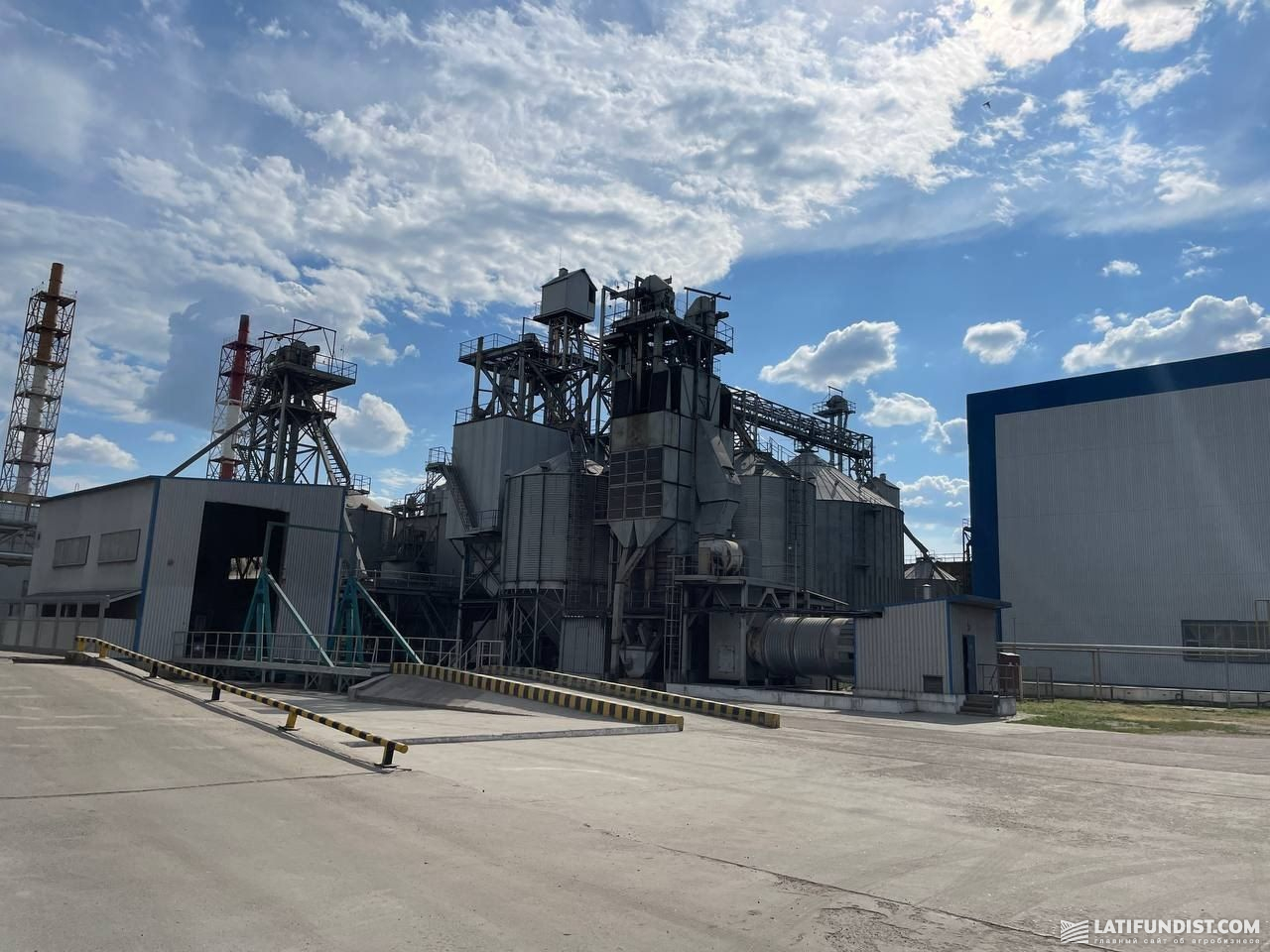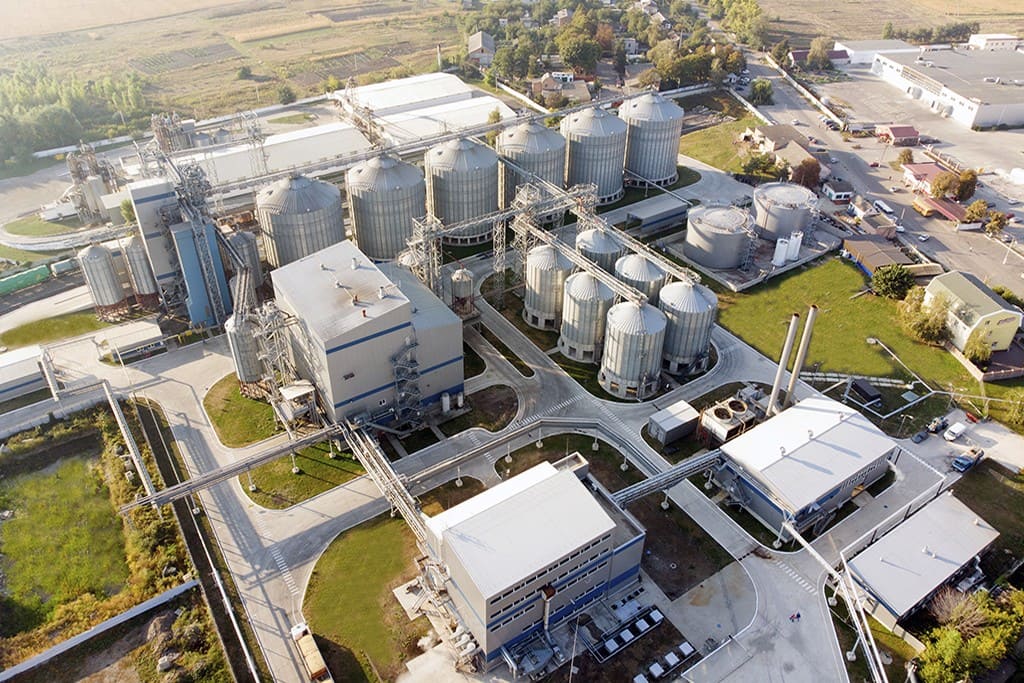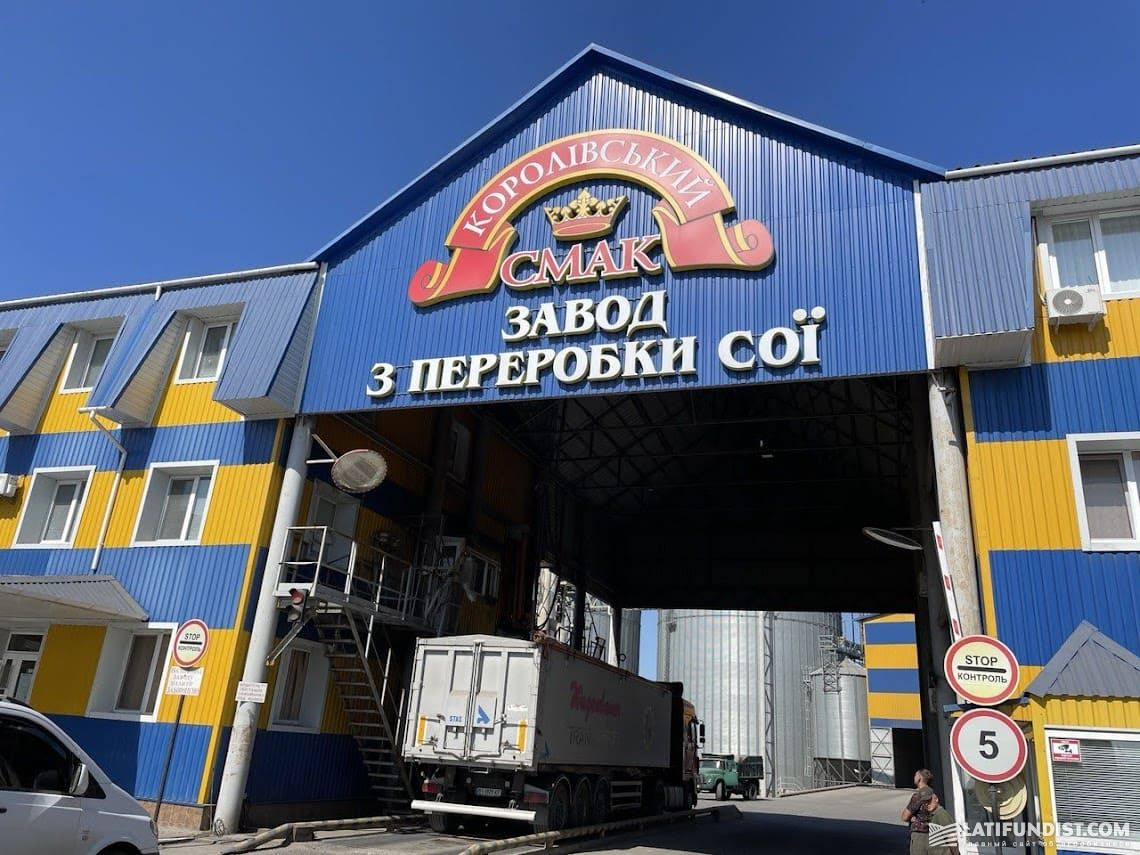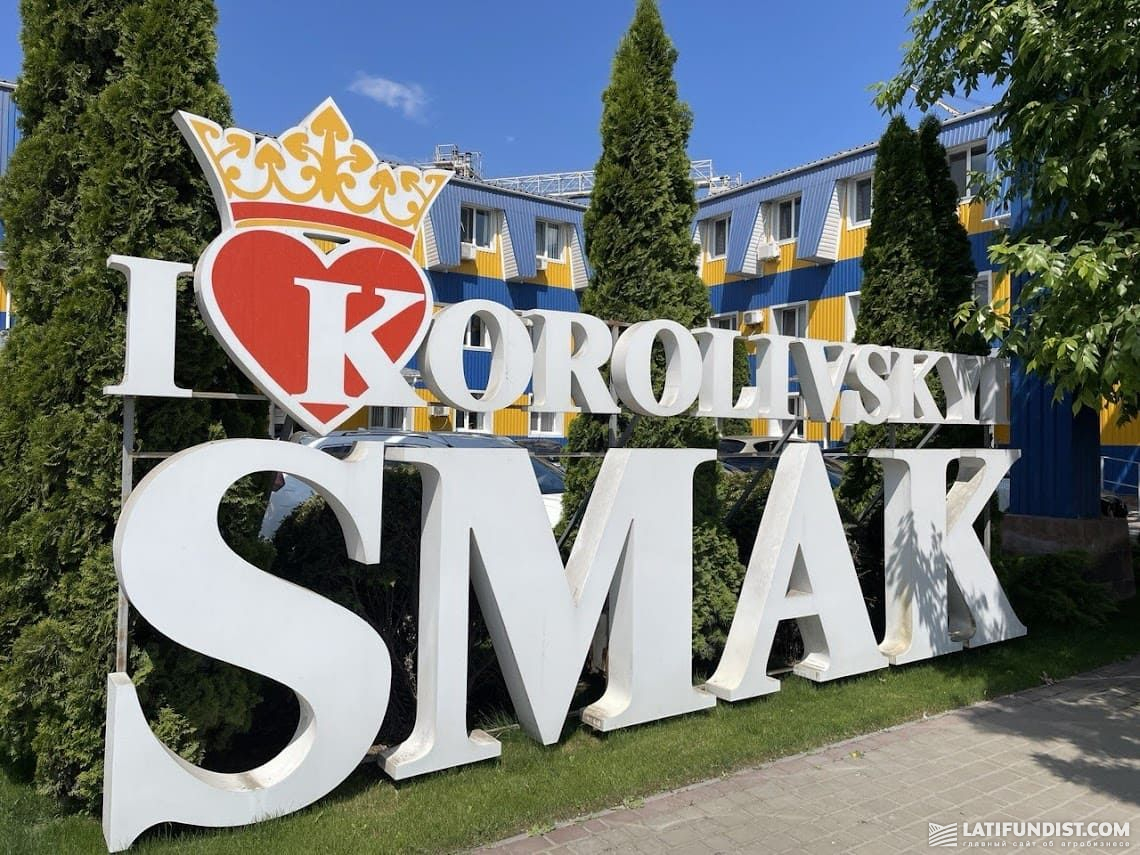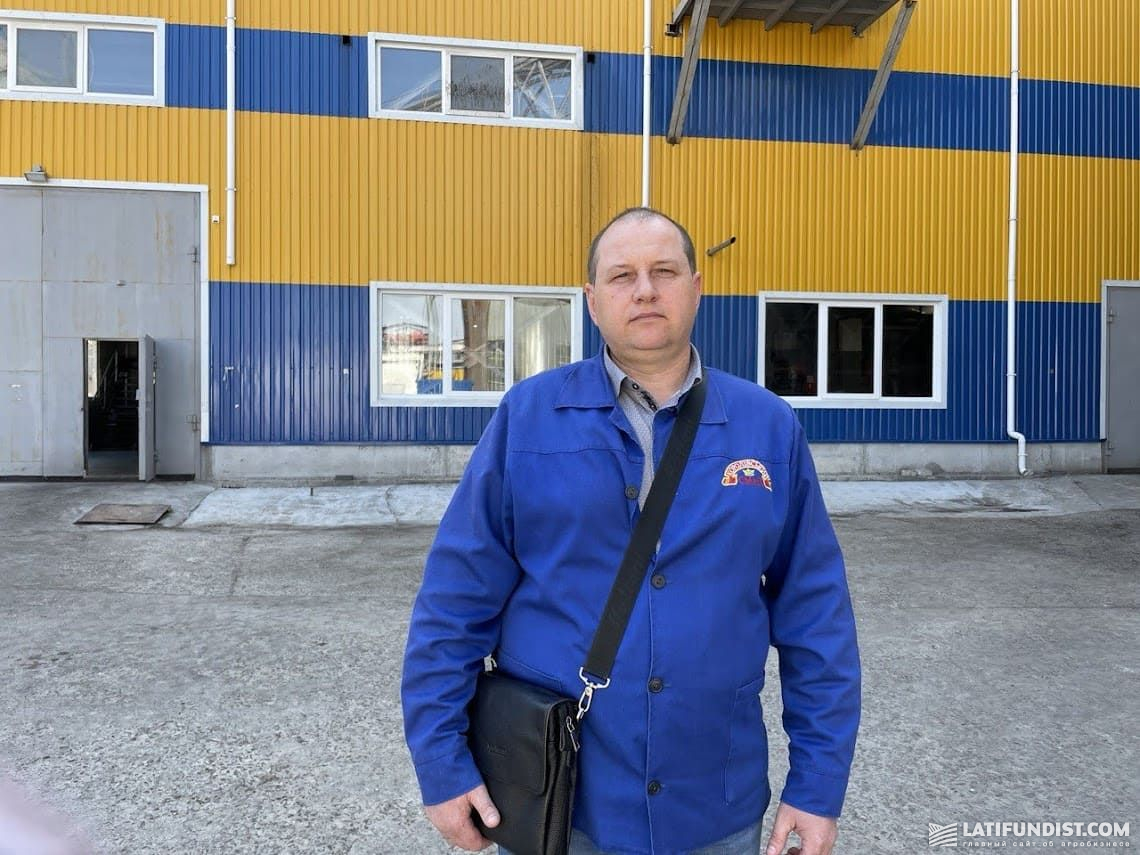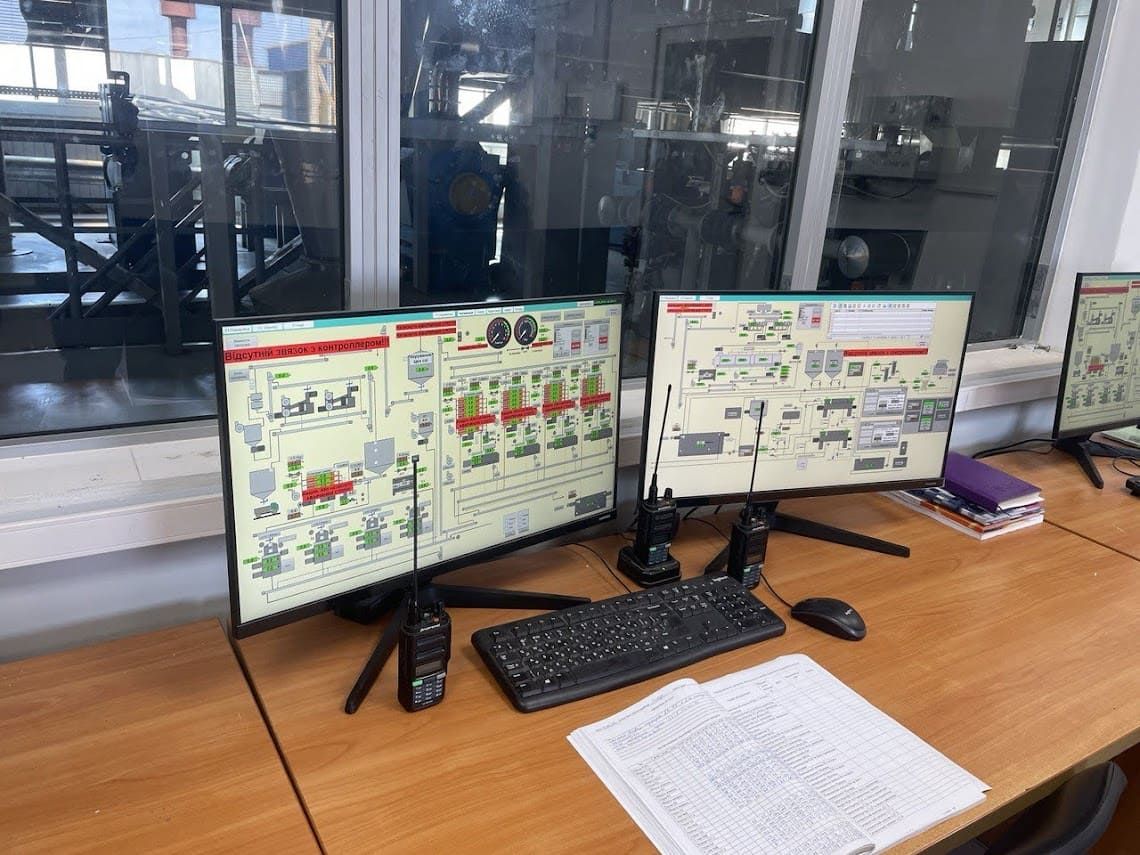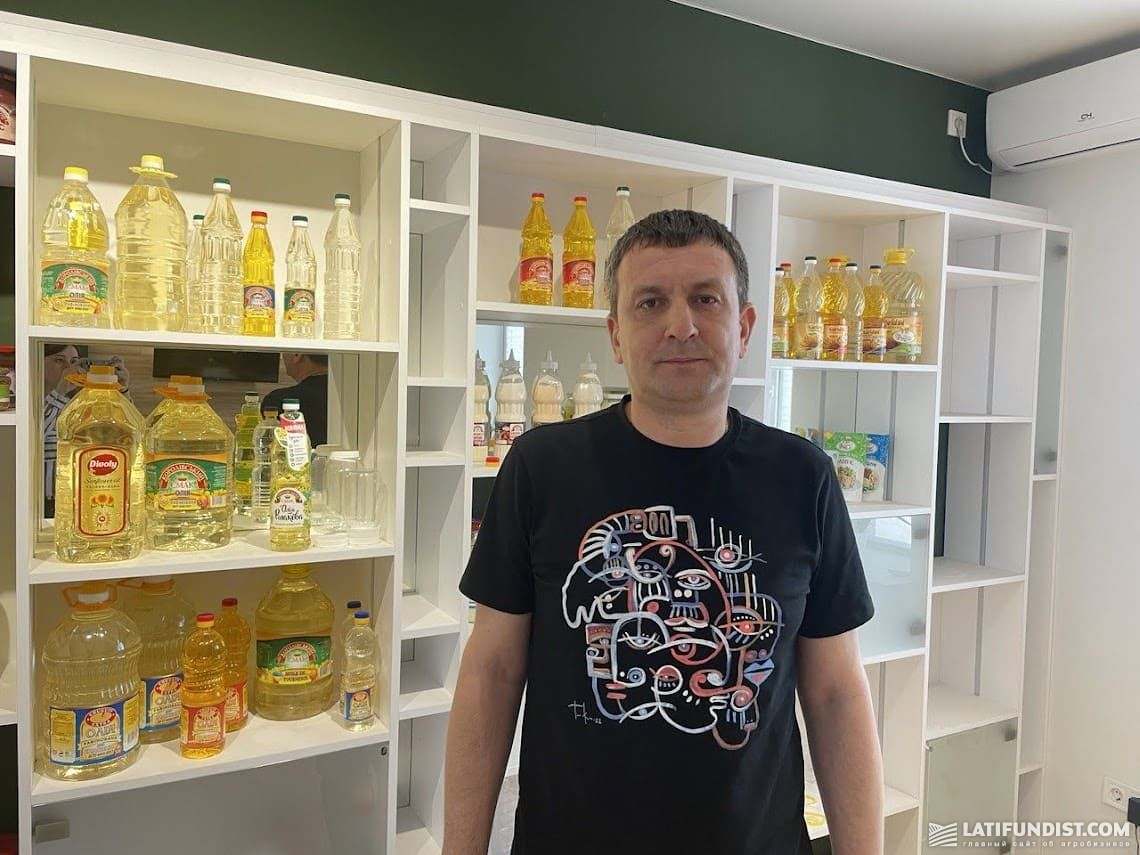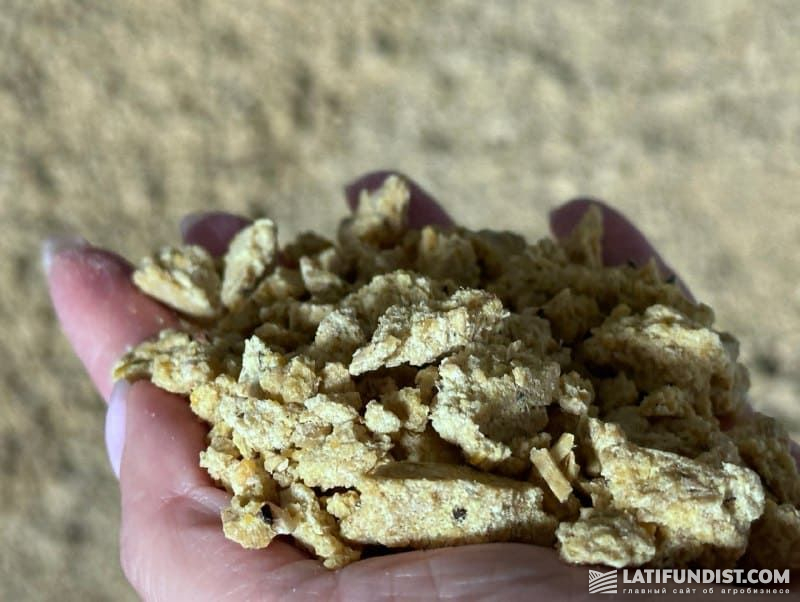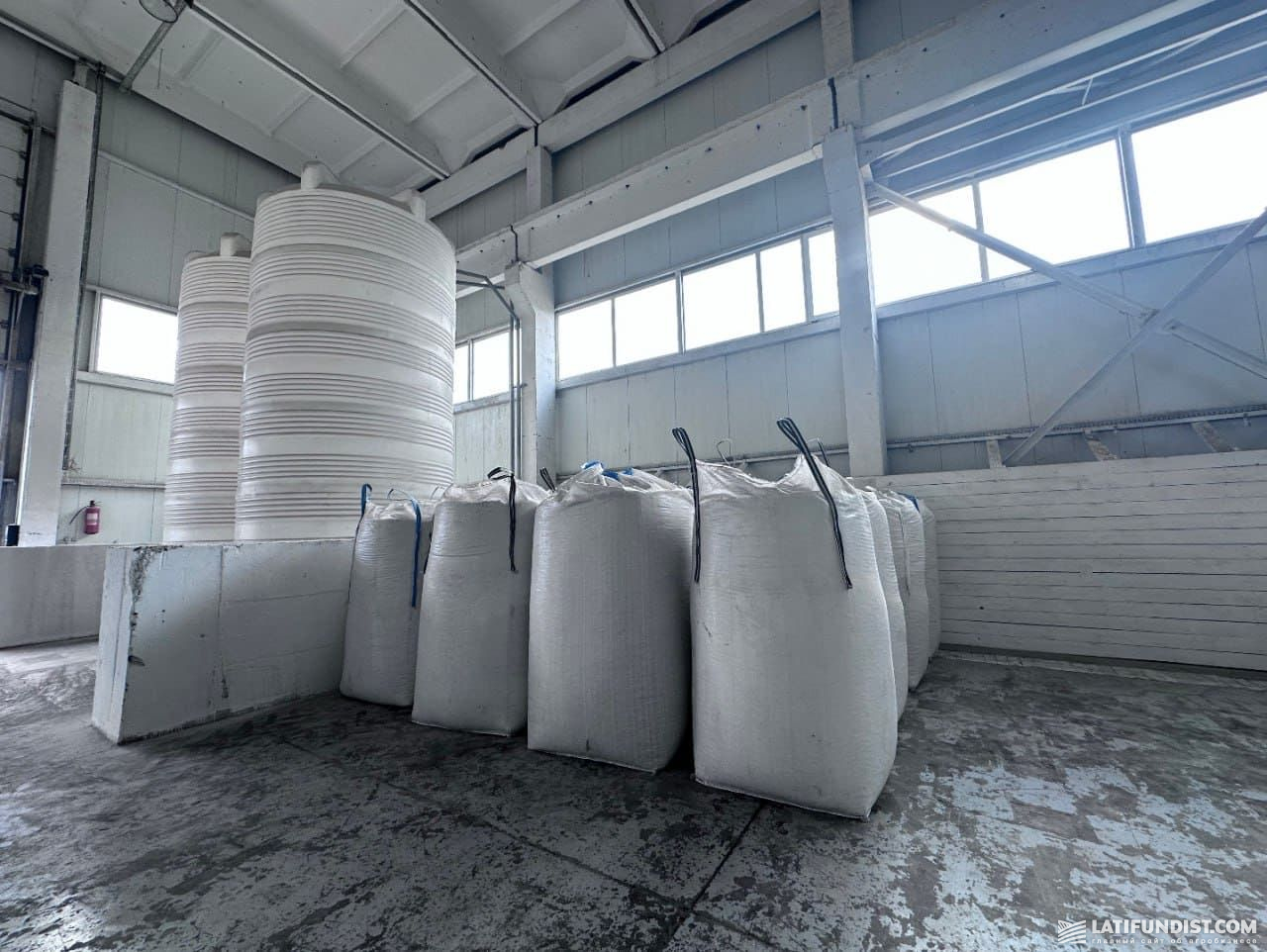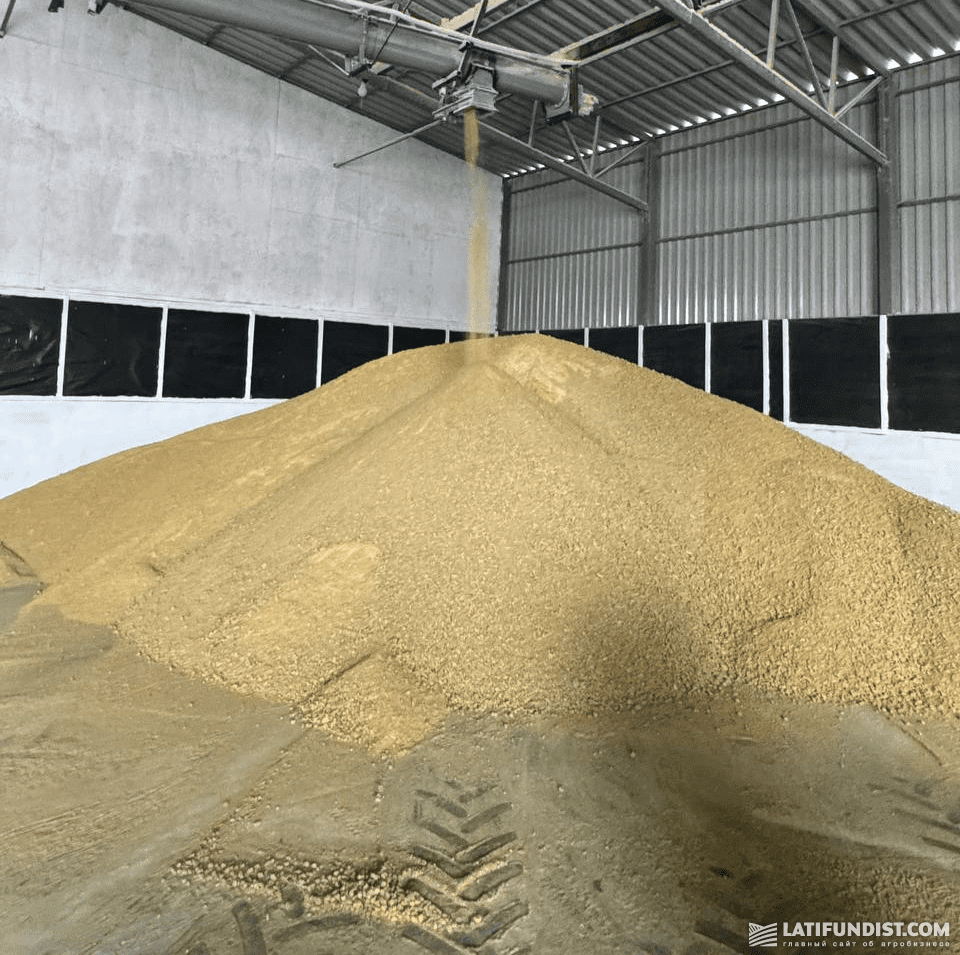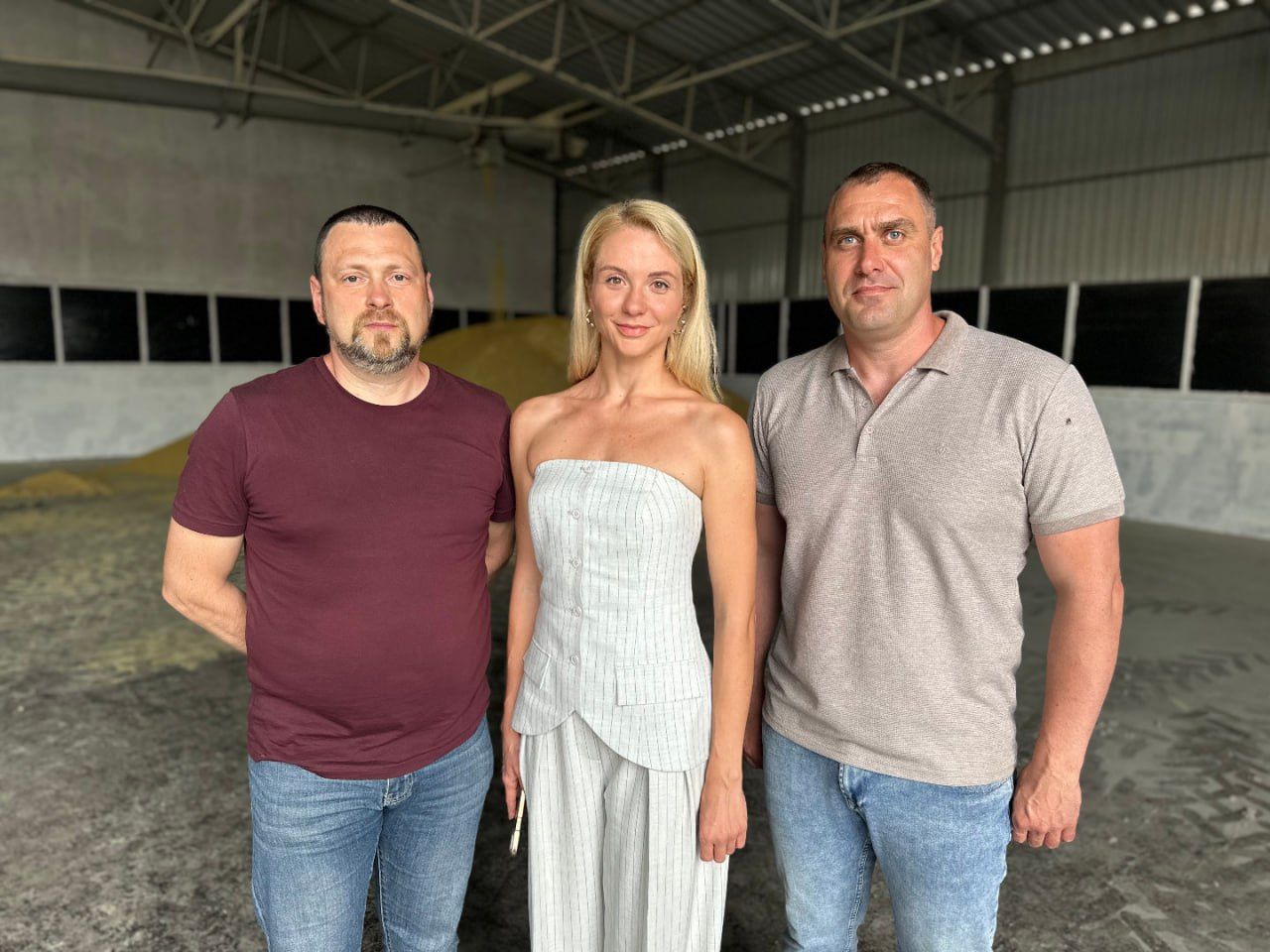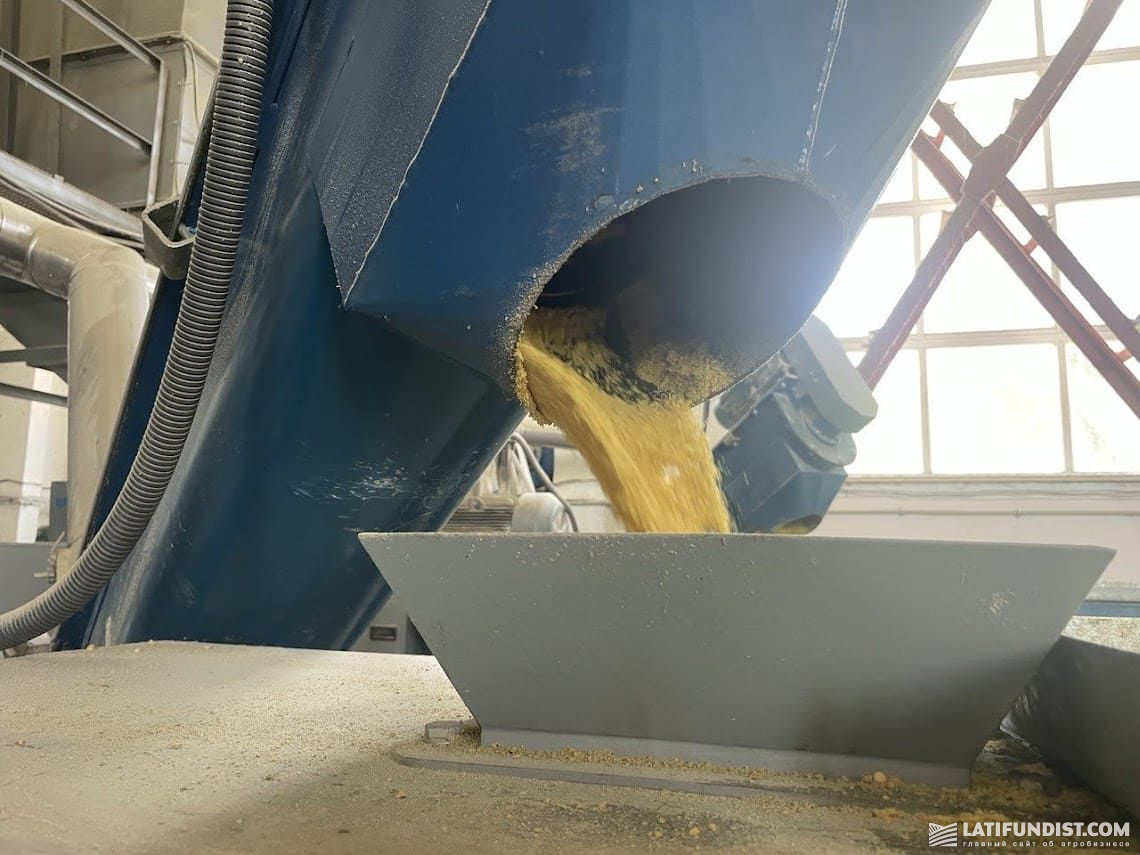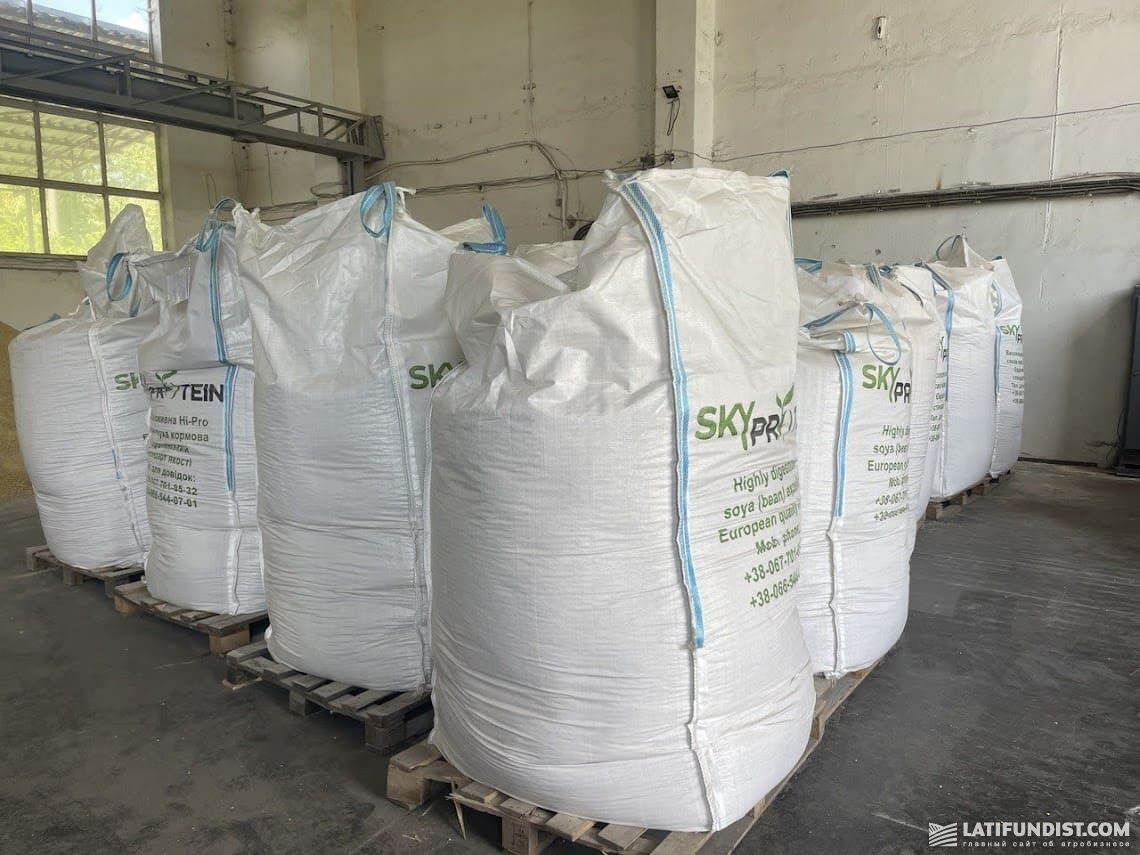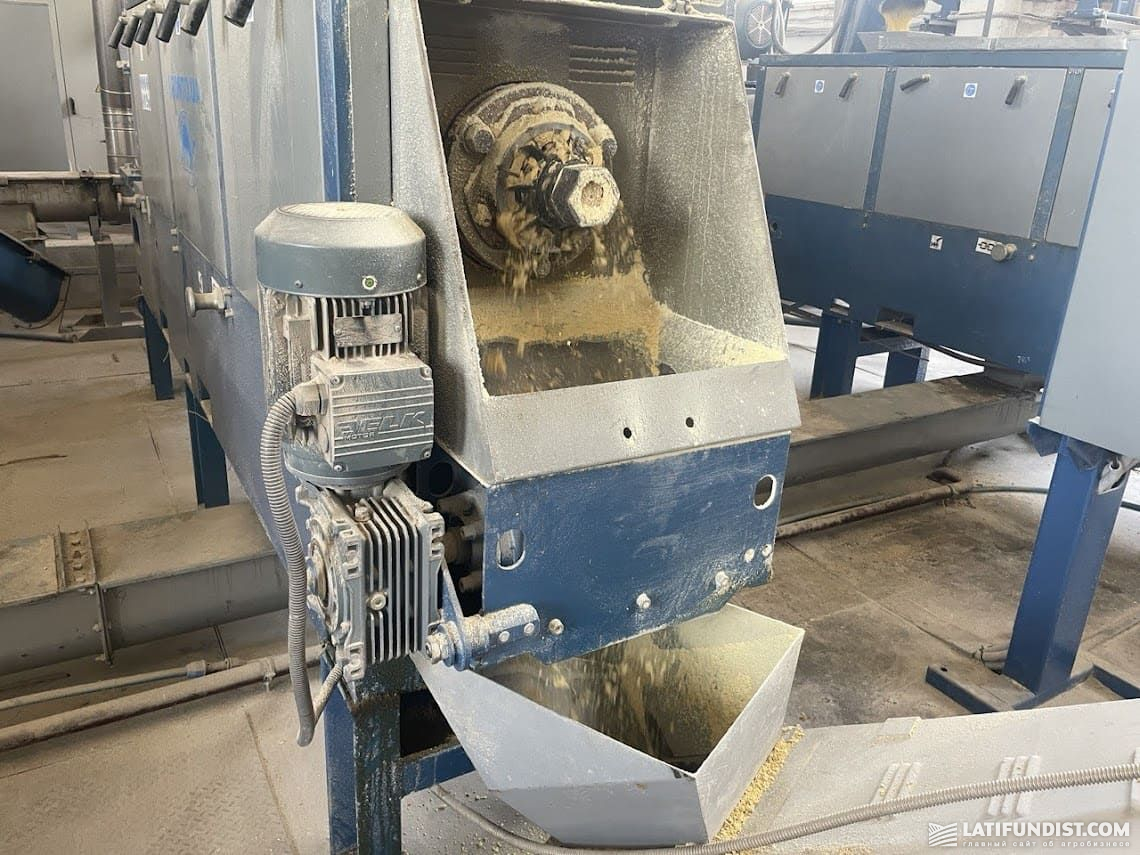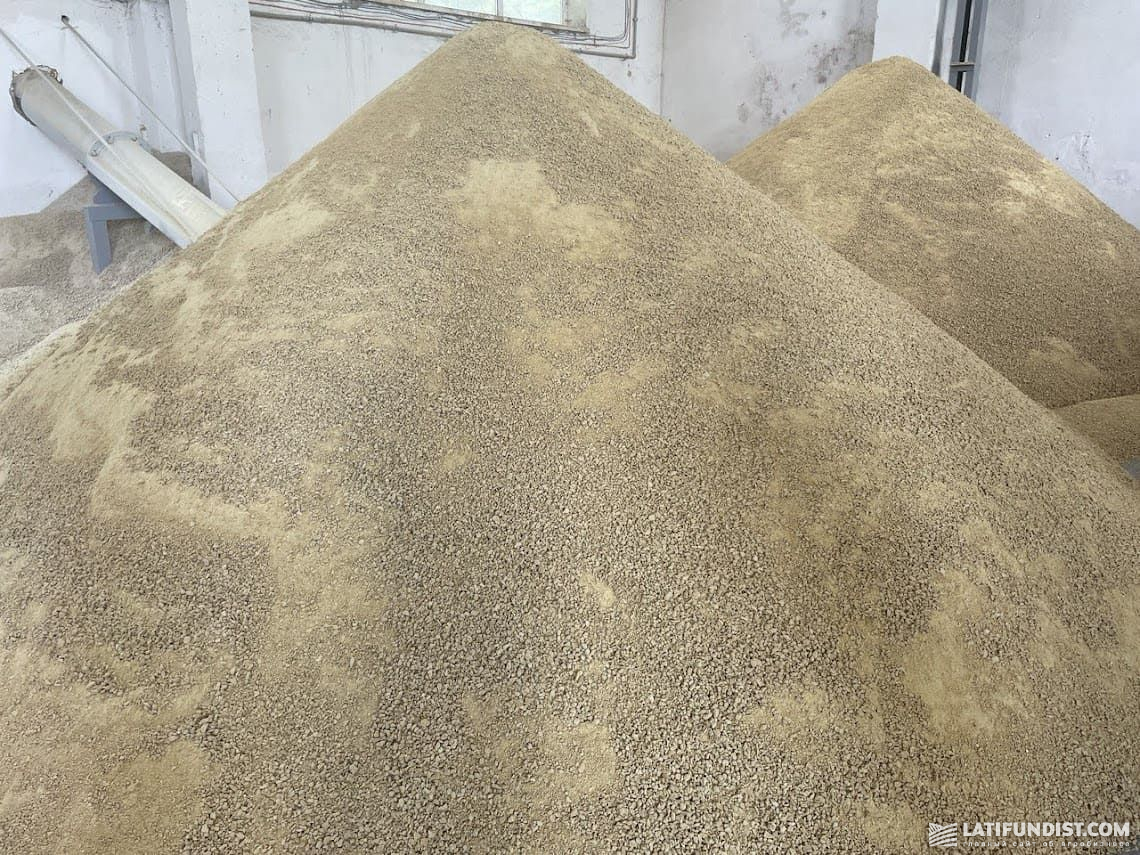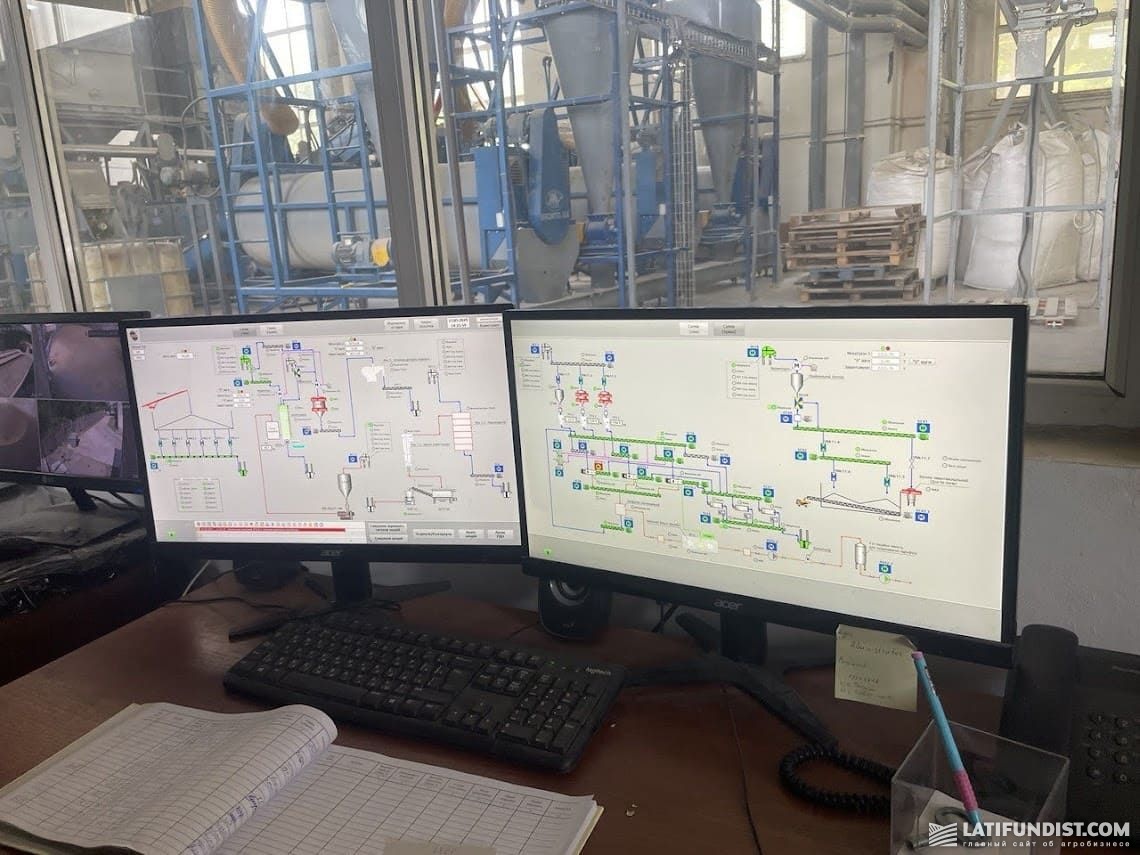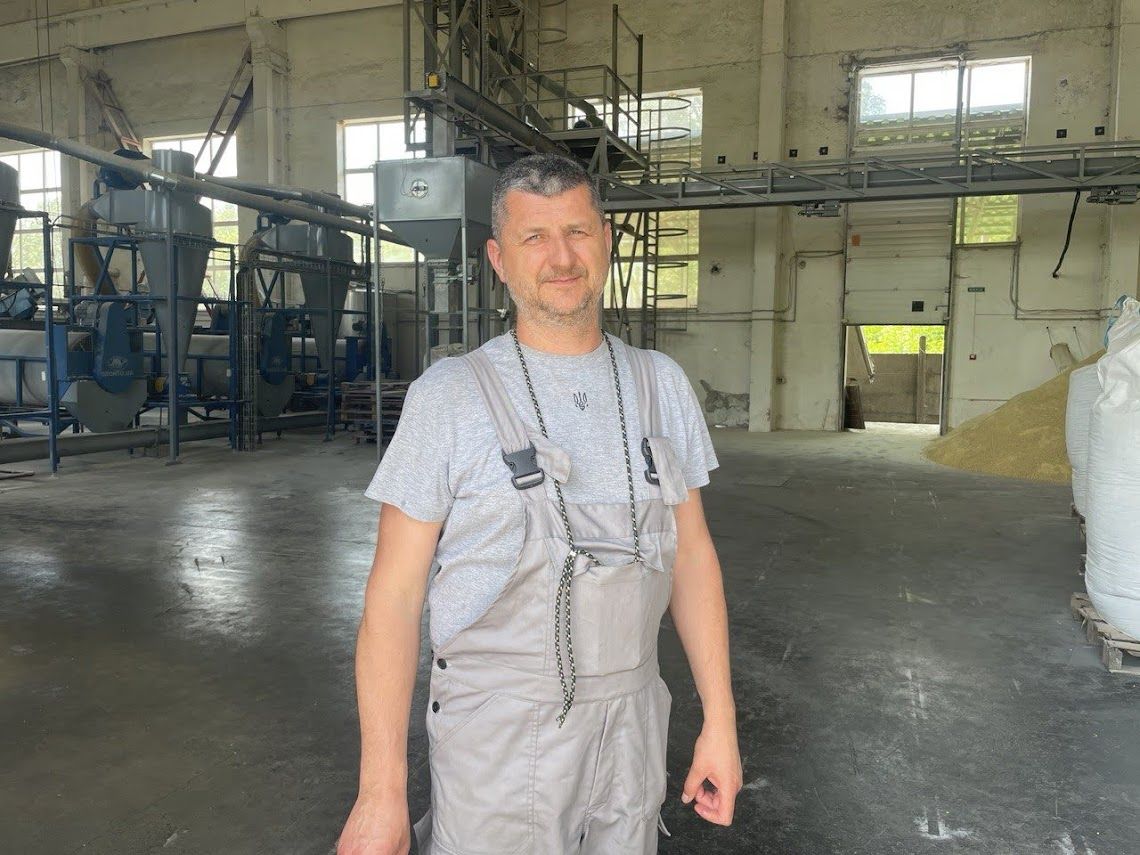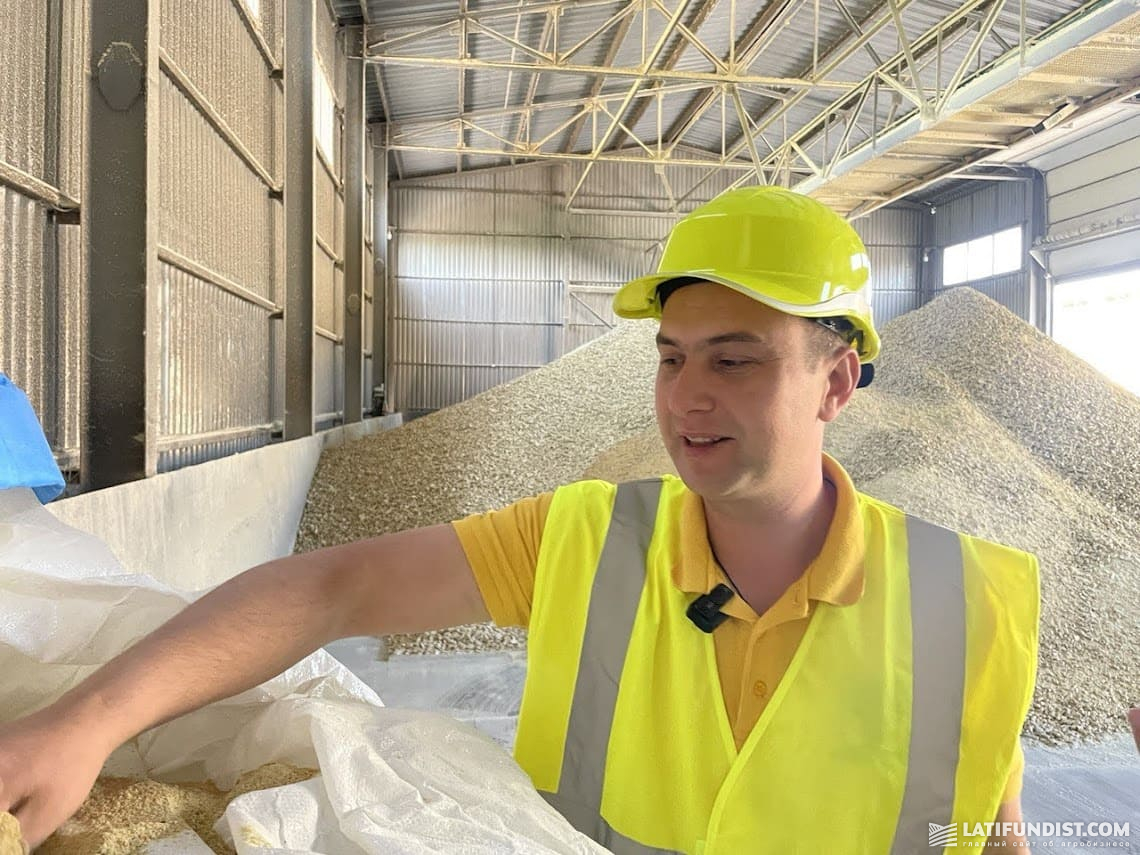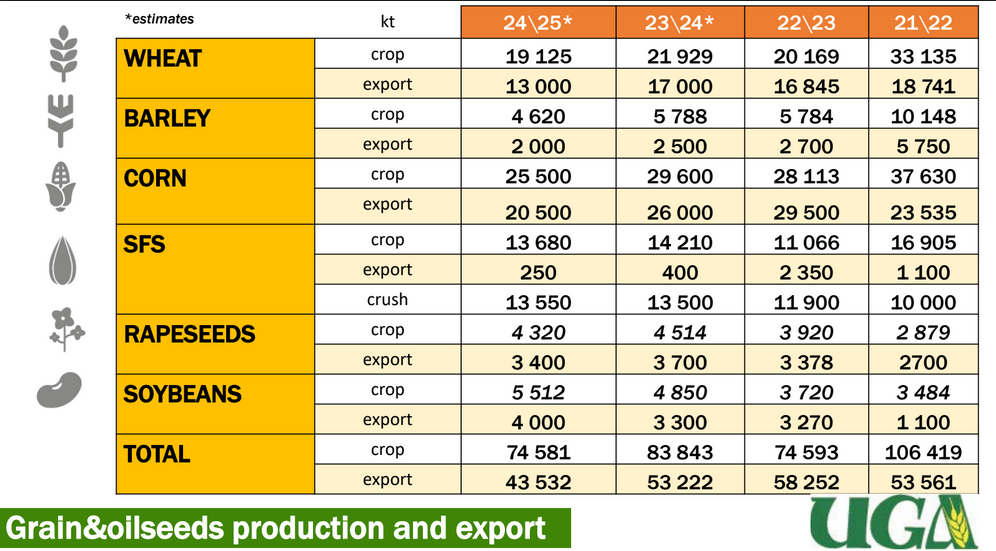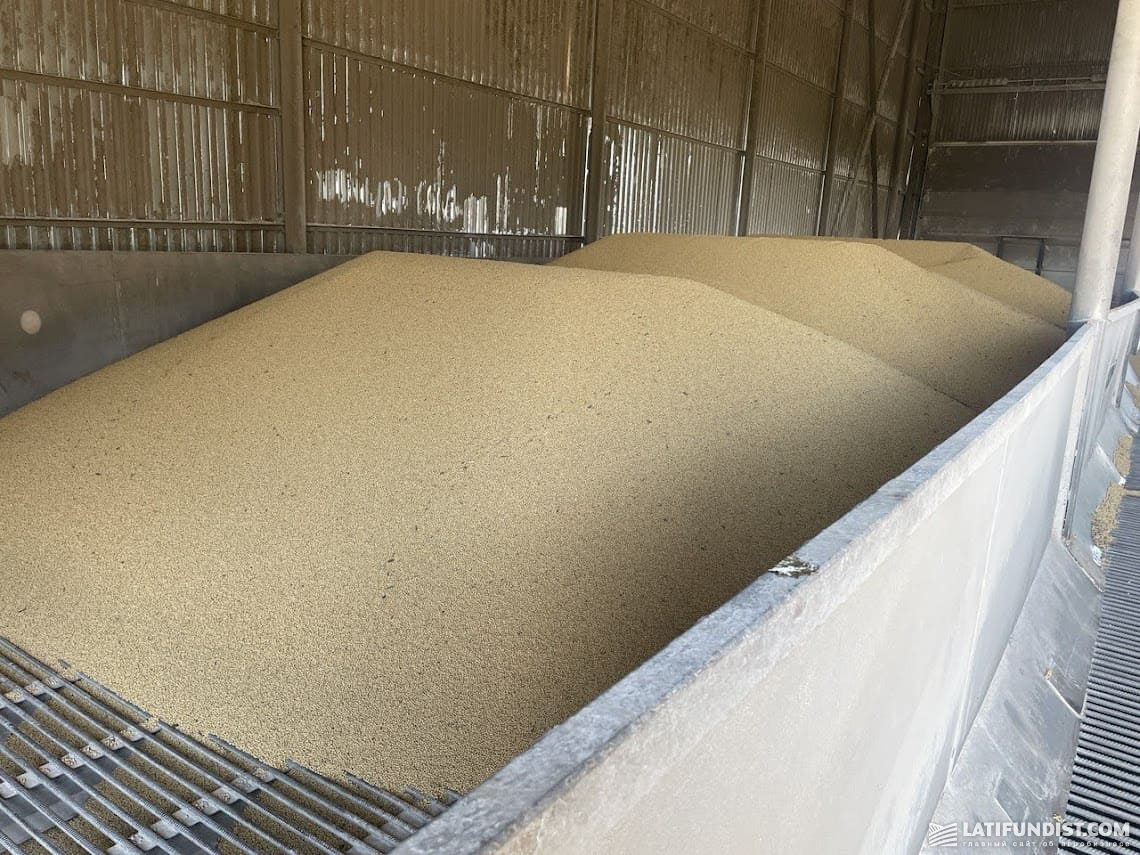Soybean Crushing: Margins, Markets and Raw Material Quality. Latifundist Visited 10 Processing Plants in the AgroTour
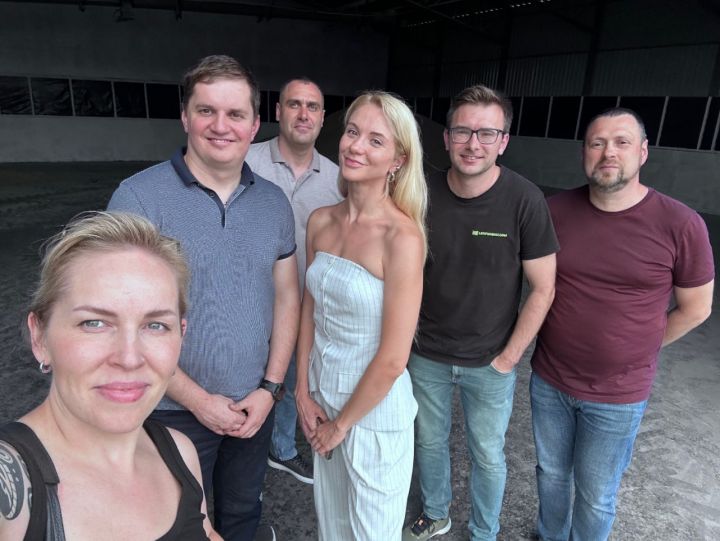
Photo by: Latifundist.com
Soybeans and rapeseed are the crops that are shaping the market these days: the areas under these crops are expanding, business is emerging from scratch, and the top ten agricultural holdings are moving into processing. Will these crops mirror sunflower's success? What is the processing margin today? What are the sales markets? And what about the quality of raw materials?
We are looking for answers to all these questions in our AgroTour "Processing: Soybean and Rapeseed", supported by our long-standing friends and partners Bühler Ukraine and Bulk Trans. We visited around 10 processing plants: both those that have been operating on the market for a long time and newly opened since the start of the full-scale war. In this article, we focus on soybean crushing.
Market old-timers
Falcon Agro Group
Our first idea was that amid low grain prices, this is a perfect time for soybean processors. But at the Falcon Agro Group plant, we are told that this is a misleading impression for soybeans, as the domestic market is now oversaturated with processed products.
The plant was launched in Kirovohrad region in 2006. It has two production lines with a capacity of 240 tonnes and 450-500 tonnes per day. The storage capacity is 52 thousand tonnes.
The facility is a monoculture plant and is designed to process soybeans only. Granulated and non-granulated meal, hydrated and unrefined soybean oil, soybean concentrate and lecithin are the end products.
The plant's director Pavlo Zhovtonizhko says that 40% of the meal produced is sold on the domestic market and 60% is exported. Before the big war, they mainly exported to belarus and some of Poland. Since 2022, the focus has shifted to Western markets, particularly Romania, Hungary and Poland. As for soy lecithin, it has been sold only to the Netherlands so far.
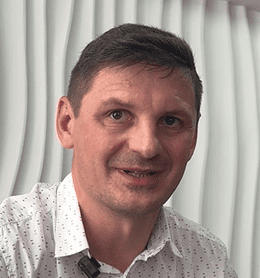
Pavlo Zhovtonizhko
Director of the Falcon Agro Group plant
"We have just started exploring the lecithin market in Ukraine. After all, everyone in Ukraine buys soya phosphatide concentrate (a product of processing hydration waste). It was previously exported to Europe. There, buyers would refine the product and bring it to the basic parameters and sell it to Ukraine at 5-6 times the price. And then Ukrainian processors learned to produce high-quality not only phosphate concentrate but also lecithin. This is a natural emulsifier used in the confectionery industry."
Lecithin has a high added value, although the cost of its production is low for the entire business, Pavlo Zhovtonizhko explains.
By the way, Falcon Agro Group was the only plant on our AgroTour to have deep soybean processing. Although there are other such plants in Ukraine. For example, the Globinsky Processing Plant of Astarta-Kyiv. The company's annual capacity is approximately 160,000 tonnes of high-protein soybean meal, 40,000 tonnes of soybean oil and 9,000 tonnes of granulated hull. Last year, the company announced that it was building an additional deep soybean processing line.
On Ukrainian and European consumer tastes
But let's get back to the Falcon Agro Group plant. Mykola Havrylenko, a chief technologist, arranged a tour of the production facilities. According to him, the plant is mainly fitted with equipment from Ukrainian manufacturers (KMZ Industries, Khorol Mechanical Plant, etc.). But the raw materials are processed with Bühler equipment: there are 11 separators, crushing equipment and grinding rollers.
Ivan Nevmerzhytskyi, a regional representative of Bühler's oilseed processing unit, mentions two important things to consider when choosing soybean processing equipment. The first is the correct choice of cleaning machines.

Ivan Nevmerzhytskyi
Regional representative of Bühler's oilseed processing unit
"Raw materials of different quality are supplied. They need to be sorted from various impurities, including pebbles, because they are the same size as soya seeds. If the stones get into the crushers or the chaffing rollers, the equipment will sustain significant damage."
Another aspect is the process of removing the shell. The hull itself does not contain protein. However, the more hulls are removed during the soybean processing, the more protein the meal will contain, and the higher its quality.

Ivan Nevmerzhytskyi
Regional representative of Bühler's oilseed processing unit
"Depending on the moisture content of the product, Bühler has different soybean processing technologies to achieve efficient hulling parameters. After all, soybeans may be dry (with a moisture content of 6-7%) and then they are processed using the hulling technology. Sometimes it comes in wet. Then we need to use hot dehulling. We have equipment for all these technologies, ensuring efficient and productive work."
We are now moving on to Falcon Agro Group's production facilities. According to Mykola Havrylenko, European buyers have a higher demand for high-protein meals containing 52% protein on a dry matter basis. Whereas Ukrainian consumers are more interested in meals containing 50% protein.
Since the company does not have any land of its own, it relies exclusively on tolling raw materials. The supply of raw materials is not a problem. But they consider export to be their main competitor.

Pavlo Zhovtonizhko
Director of the Falcon Agro Group plant
"This year's harvest is anticipated to exceed 5 million tonnes. This would be enough for crushers. But all high-protein soybeans are exported. We are left with low or medium quality soybeans."
Why is Europe ready to pay more for Ukrainian soybeans? As the director of Falcon Agro Group explains, European processors are looking to buy high-protein soybeans from Ukraine to process and produce a better quality meal than the one they import from us. Even if they buy soybeans in Ukraine, the cost of producing the meal on site will be lower than the cost of shipping it to them. Therefore, it is profitable for them to import soybeans. But not for everyone. Only those who have processing facilities.
There are quality issues with raw materials. In the last two years, there has been a lot of damaged beans. In some cases, farmers harvested them late, and in others, they mix other crops with soybeans. And the main problem is that they keep soybeans in warehouses for a long time, forget to dry them, and often the beans get dark inside.
Learn more about how the quality of raw materials, sales markets and margins of soybean processing have changed soon in an interview with Pavlo Zhovtonizhko on Latifundist.com.
Plant of Korolivsky Smak Group
We visit the multi-crop soybean and rapeseed processing plant of Korolivsky Smak Group on the second day of the AgroTour. The company started processing soybeans 7 years ago. Currently, the designed capacity ensures the processing of 700 tonnes of soybeans per day.
In the video, Vitaliy Rusavskyi, the head of the commercial department at Korolivsky Smak, recounts how the company built a soybean processing plant from scratch.
The company's processed products include soybean oil (both crude and deodorised) and meal (granulated and non-granulated). By the way, the company was the first in Ukraine to produce deodorised soybean and rapeseed oil.
The primary processing of rapeseed and soybeans occurs at two separate plants. But the extraction line is common to both crops. We were just in the middle of the switch from rapeseed to soybeans: they are processing a batch and readying it for cleaning and preparing for the new season — in a month's time, the new crop rapeseed is due.
The plant's complex consists of a 30,000-tonne elevator (daily receiving capacity is 1,500 tonnes) and a preparatory department with a pre-treatment and extraction shop. The pre-treatment shop runs on Chinese equipment, while the extraction plant uses equipment from the Chernihiv-based manufacturer Tan.
Modernization is a regular process at the plant, according to Oleksandr Feshchiy, deputy general director for production. Certain processes are automated. This is how they reduce energy costs.
The produced granulated meal is stored at the elevator— there are three silo bins 3,000 tonnes each. The plant also has an oil storage facility. Most of the products are exported. Only a small percentage of the meal is used in livestock farming.
How do they decide whether to process rapeseed today and soybeans tomorrow? First of all, they consider the number of contracts. Secondly, it is the availability of raw materials. Oleksandr Feshchiy admits that last year he even had to suspend soybean processing since all raw materials were exported from Ukraine.
We will speak more about the plant in our second article on rapeseed processing. We would just add that Korolivsky Smak also processes sunflower. The company is also keeping up with trends in this area. According to Ivan Nevmerzhytskyi, a regional representative of Bühler's oilseed processing unit, Ukrainian crushers are now trying to reduce the level of husk in the clean kernel.

Ivan Nevmerzhytskyi
Regional representative of Bühler's oilseed processing unit
"It is harder to remove the husk from sunflower. While in soybeans, 0.5% of the husk remains, which is difficult to remove, in sunflower it is 10-12%. That is why companies are installing more machines and carrying out several stages of separation to reduce the level of husks in the clean kernel."
Kernel set to process soybeans and rapeseed
Another stop on the AgroTour is the Kernel multi-crop crushing plant in Khmelnytskyi region. The company is one of the world's largest sunflower oil producers and has three multi-crushing plants in Ukraine. But since we are covering rapeseed and soybean crushing, we asked about these two crops.
So Kernel looks to process soybeans this year. According to Oleksandr Golovin, Kernel's commercial director for Ukraine, this will be sort of an experiment for the company. He doesn't reveal how much soybeans will be processed. But he notes that for rapeseed it will be 8-10% of the total crushing.
Oleksandr Golovin speaks more about the processing margin in the video.
Plants commissioned in the last two years
Lyubaretsky Soybean Processing Plant
The Lyubaretsky Soybean Processing Plant was launched in May 2022, at the height of the big war. It has two lines with a soybean processing capacity of 1.2-1.5 thousand tonnes per month. In the future, the company plans to expand by installing two additional lines and reaching a capacity of 3.5 thousand tonnes per month, and is also intending to enter the extraction and deep processing of soybeans. Currently, they produce oilcake (the main product) and soybean oil. They buy both GMO and non-GM soybeans.
The company exports 90% of its oil either for biofuel or feed products to Italy, Romania, Poland, Bulgaria, Hungary and Germany, co-owner Halyna Matviychuk says. The oilcake is sold both locally and abroad.
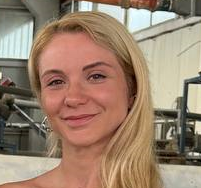
Halyna Matviychuk
Co-owner of the
Lyubaretsky Soybean Processing Plant
"Oilcake has long been viewed as a leftover product. And now it is the main component for feeding livestock and poultry. That is why our local customers now represent 70% of our sales, including some of the largest companies in Ukraine. We export another 30% of the cake with 41-43% protein."
One of the peculiarities of oilcake is its short storage term due to its high oil content. This affects the geography of exports. Halyna says that China loves extraction products, but due to the limited storage time, we cannot deliver them there.
Operations director Yuriy Doroshev recalls how the company once negotiated the supply of oilcake to Baltic buyers. They were hesitant because the Ukrainian supplier had previously shipped products "that could only be disposed of".
So the plant focuses on product quality and is about to be certified to GMP+. Halyna Matviychuk notes that the company does not add artificial protein to its products. It appears some crushers add urea to the cake and mix in grain of other crops to improve the analytical parameters of the protein.
She shares more about the quality of the oilcake and pro tips for those planning to process soybeans in the video.
Sky Protein
Sky Protein is one of the plants launched during the big war and it has been active for the last 9 months. It was built on the premises of an old chemical plant. It produces soybean oil and high-protein cake.
The plant currently operates three processing lines, says Roman Stemkovskyi, production director, who is giving us a tour of the production facilities. The soybean processing capacity is 60 tonnes per day. The output of oilcake is 74 tonnes, and the oil content is 13%. There are three extruders, three presses and three coolers. There is floor storage and the equipment for loading into big bags.
The management sought to buy equipment made in Ukraine to get components faster.
Co-owner Dmytro Kolchik says that from the start, they wanted to build an export-oriented enterprise, with a focus on Poland. They chose a location for the plant in an area with high production of high-protein soybeans. The company studied the technology, and Dmytro personally visited many small soybean processing plants in Ukraine. However, with the borders blocked, the plans changed — from exports, they switched to the domestic market, which currently accounts for 90%. As soon as the borders return to normal, they will gradually enter the Polish market.
Today, the company has GMP+, DSTU ISO 22000:2019, ISO 22000:2018 certificates and a state-of-the-art laboratory.
The plant produces high-protein cake with a protein level of 46% and above. Maria Zinchuk, head of Sky Protein's laboratory, explains why every bit of protein in feed is a saving.
Forward Agro Trade
Forward Agro Trade is another young player in the soybean crushing market with non-GM soybeans. Although, as the director Viktor Furdiyaka admits, there were thoughts of working with GM soybeans. But then they realised that they wanted to stay in a narrow niche: "We are a small company and perhaps this will be our competitive advantage."
The company produces soybean cake and oil. Its production capacity is 1.5 thousand tonnes per month. They mainly ship to Central Europe. With time, the company came to the conclusion that Germany, the Netherlands and Austria are the most marginal markets.
Crushing plants, primarily serving livestock farming
Agroprodservice
While we are in the western regions, we cannot but drop in on our friends, the Agroprodservice soybean plant. Its maximum soybean processing capacity is 120 tonnes per day, and the actual capacity is around 100 tonnes. They work exclusively with non-GM soybeans. They produce oilcake (45-46% protein, 6% fat, 6% residual moisture) and soybean oil.
The plant's director, Stepan Bednazh, says that 80% of production is used for its own livestock. The company raises cattle, pigs and poultry. They also export oilcake to Turkey and Romania, and almost all of their soybean oil to Poland.
We get to the plant while the big bags are being filled with oilcake to be shipped to Turkey.
— How does one visually distinguish a quality product?
— By colour, says the plant director. Burnt soybeans have a completely different colour. It's orange. And the fatter the cake is, the darker it is. But we are doing well with quality, since the plant has a laboratory that takes samples every two hours and controls all the parameters of the original product.
Approximately half of the processed raw materials are soybeans of their own production. The company even has its own seed plant. However, the director of the laboratory says that even their own soybeans are checked for initial parameters: they must have up to 10% moisture and 37% protein.
Like other plants, they also preferred equipment from Ukrainian manufacturers, including Khorol Mechanical Plant, CherkasyElevatorMash, etc.
Agrotrade 2000
The Agrotrade 2000 oil extraction plant was built and started up in 2021. The initial capacity for sunflowers was 200 tonnes per day, and eventually it was increased to 260 tonnes. The capacity for soybeans is 100 tonnes, and for rapeseed up to 200 tonnes. Each crop has a specific technology, so the productivity is different.
Andriy Polyakov, the plant's director, explains that despite the focus on sunflower, working with three crops is a good safety net.
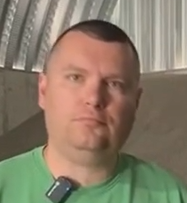
Andriy Polyakov
Director of the Agrotrade 2000 oil extraction plant
"Crushing three crops pays off. Everyone can see what is happening with sunflower — it has gone up. Next year's season will be tough for all plants, as sunflower plantings will not be as high as expected. Growers have planted more soybeans. So, our market colleagues and we see that there will not be enough sunflower next year. We will have to compensate with other crops."
The company will process sunflower until the end of the marketing season as it has sufficient stocks. In July, they will process about 1 thousand tonnes of soybeans, and then rapeseed. The geography of purchases is between 100 and 150 km on average.
The company doesn't see a distinct soybean economy here as it is used mostly for the group's livestock. However, they are planning to upgrade their soybean crushing capacity. In the coming years, Agrotrade 2000 also plans to add sunflower crushing capacity — first to 350 tonnes per day, and then to 500 tonnes.
Andriy Polyakov gives more details about the plant in the video.
Crop 2024 and soybean crushing prospects
Soybeans are arguably the only crop farmers may increase the area cultivated due to the profitability of this year's harvest, according to the UGA. They add that the soybean harvest is pegged at 5.5 million tonnes (2023: 4.9 million tonnes). Potential exports in 2024/25 MY could reach 4 million tonnes (3.3 million tonnes in the current season).
The latest data from the Agrarian Ministry suggests that 2,032.3 thousand hectares of soybeans were planted this year (102% of the projected area).
Andriy Novoselov, chief analyst at Barva Invest, cautioned in a statement to Zerno magazine in March that in just one season, the crop that was a leader last year could lose the race.
The analyst explains that this season soybeans are marginal partly owing to the poor harvest in Argentina: only 25 million tonnes were harvested there in 2023. Although the average harvest in recent years was 45-50 million tonnes. Argentina is the key exporter of soybean products. In the 2024 season, the production is likely to reach 50-52 million tonnes again.
South America will be a fundamental pressure on the markets, the analyst claims. Besides, the US planted record areas of corn last year, which means that this season, given the crop rotation, more soybeans will have to be planted.
"We process 1.5 million tonnes of the 5 million tonne crop. When 60-70% of the crop is exported, it is external prices that will drive the situation. Moreover, soybeans are currently one of the lowest margin crops for the processor. By contrast, we processed 1 mln tonnes of rapeseed in the year against the usual 0.2-0.3 million tonnes and demonstrated excellent margins in crushing at the beginning of the season — up to 120 USD/t," the analyst argues.
Pavlo Zhovtonizhko, director of Falcon Agro Group, confirmed this to us: before the big war, the margin of soybean processing was higher. Now it is on par or even lower: "Prices for meal are low, while prices for soybeans often exceed the economic logic of processing."
However, as the co-owner of the Lyubaretsky Soybean Processing Plant, Halyna Matviychuk, observes, there is potential for the development of soybean processing in Ukraine. And over the past year, many businesses have been mulling over venturing into this particular segment.
Kostiantyn Tkachenko, Natalia Rodak, Latifundist.com

